Dog Losing Hair in Patches and Scabs: Causes, Diagnosis, and Treatment

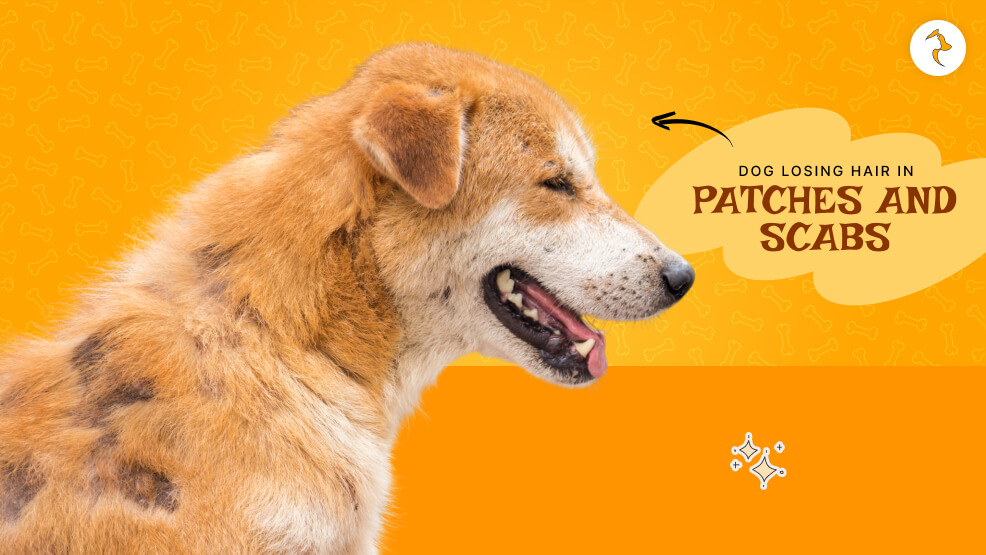
Worse than watching your dog lose clumps of hair or develop scabby crusts is not easily imagined. Scabbing and patchy shedding (alopecia) are among the most prevalent skin problems, with a staggering array of causes—some trivial and simple to resolve, others more serious and requiring vet appointments.
What Does It Mean When a Dog Loses Hair in Patches with Scabs?
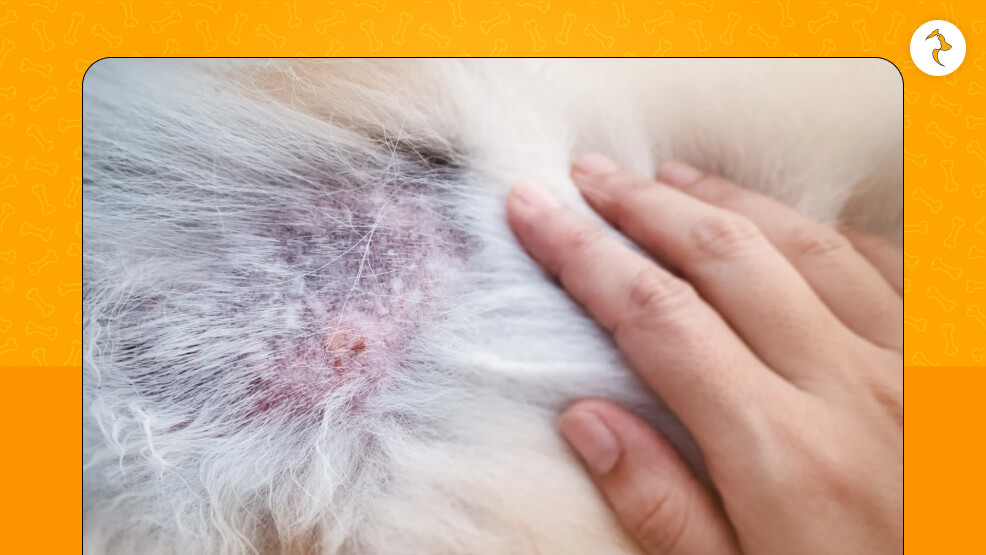
Hair loss (alopecia) in dogs refers to part or all hair loss in an area where there should be hair. Where there are scabs, this is most commonly due to:
- Skin infection or inflammation
- Trauma (scratching, biting)
- Underlying skin disease
Scabs are a secondary effect of healing healthy skin; suspected causes are scratching, bleeding, or oozing. Where there are bald patches if they do appear before these, then that’s an irritant or sickness enough to make your dog bite and scratch repeatedly.
Dog Losing Hair in Patches and Scabs: Common Causes
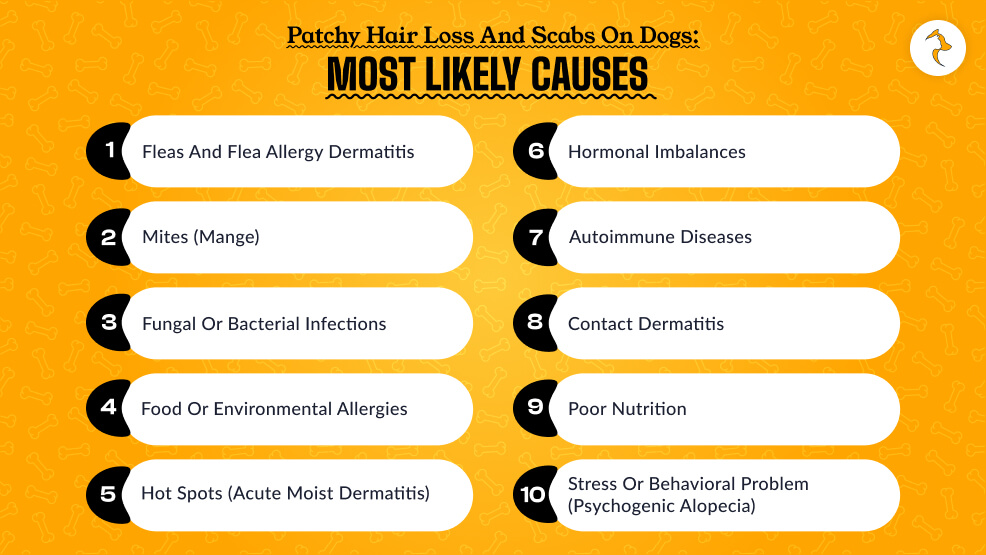
There are many possible reasons ranging from possibly life-threatening systemic illness to harmless irritation.
1. Fleas and Flea Allergy Dermatitis
- Primary cause of patchy hair loss and scabbing
- Flea saliva is an allergen but a very scratchy inducer
- Scabs to be expected in the base of the tail, belly, inner thighs, and back
2. Mites (Mange)
- Sarcoptic mange (scabies) and demodectic mange are causes of hair loss and scabs
- Sarcoptic mange is highly contagious and very itchy
- Affects multiple areas like the ears, elbows, chest, and legs
3. Fungal or Bacterial Infections
- Staph infections form pustules that crust to form scabs
- Ringworm (fungal) forms ring-patterned patches of hair loss with crusting and scaling
- Often on the face, paws, and legs
4. Food or Environmental Allergies
- Recurring skin inflammation due to pollen, dust mite, or food allergy
- Excessive licking and chewing leading to hair loss and sores
- Usually on the paws, feet, belly, ears, muzzle
5. Hot Spots (Acute Moist Dermatitis)
- Red, wet, inflamed lesion
- Scabs immediately if skin becomes dry or infected
- Secondary to local irritation of one area, most often due to licking or scratching
6. Hormonal imbalances
- Bilateral hair loss secondary to disease such as Cushing’s disease or hypothyroidism
- Can be secondary infections of exposed skin
- Typically affects tail, flanks, and neck
7. Autoimmune diseases
- Lupus, pemphigus-type autoimmune dermatitis can cause ulceration, crusting, alopecia
- Most likely to affect nose, face, ears, and feet
- Rare but very threatening and ought to be treated by an expert
8. Contact Dermatitis
- Shampoo, lawn chemical, or cleanser irritant to the skin
- Red, itchy rashes that crust when they are healing
- Where coat is in contact with irritants (belly, paws, chest)
9. Poor Nutrition
- Malnutrition of protein, zinc, or omega-3 fatty acids will result in poor skin
- Can result in dull coat, hair loss, and secondary infection
10. Stress or Behavioral Problem (Psychogenic Alopecia)
- Anxiety and boredom will result in chewing, licking, or excessive grooming of canines
- Produces redness of the hair initially without subsequent development of secondary cutaneous disease but ultimately causes scabbing due to trauma
Problem Identification: What to Look Out For
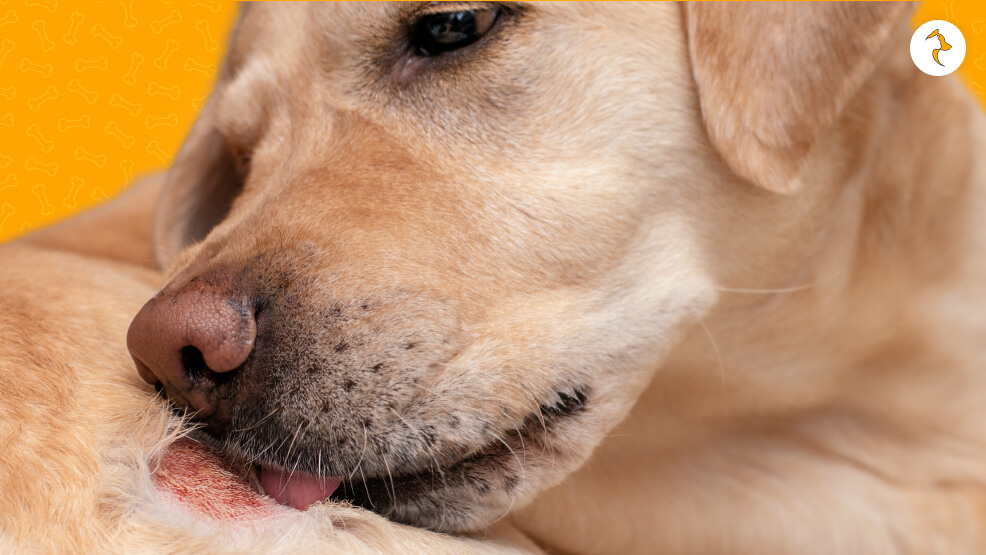
Etiology can be determined by virtue of being known regarding something in respect of the symptoms of it.
Normal Accompanying Signs:
- Excessive licking and scrathing
- Red skin
- Ring-type alopecia (cirsoid alopecia)
- Foul odor on skin
- Scabs or scabby lesions
- Oozing or pus
- Thickening or darkening of the skin
- Change in behavior (irritability, lethargy)
Pattern and location of hair loss might be an indication:
- Tail/back: Flea allergy most typically
- Ears and face: Mange or fungus
- Paws and legs: Allergic reaction or stress
- Symmetrical loss of hair: Imbalance in endocrine system
Veterinarians Diagnose Canine Hair Loss with Scabs
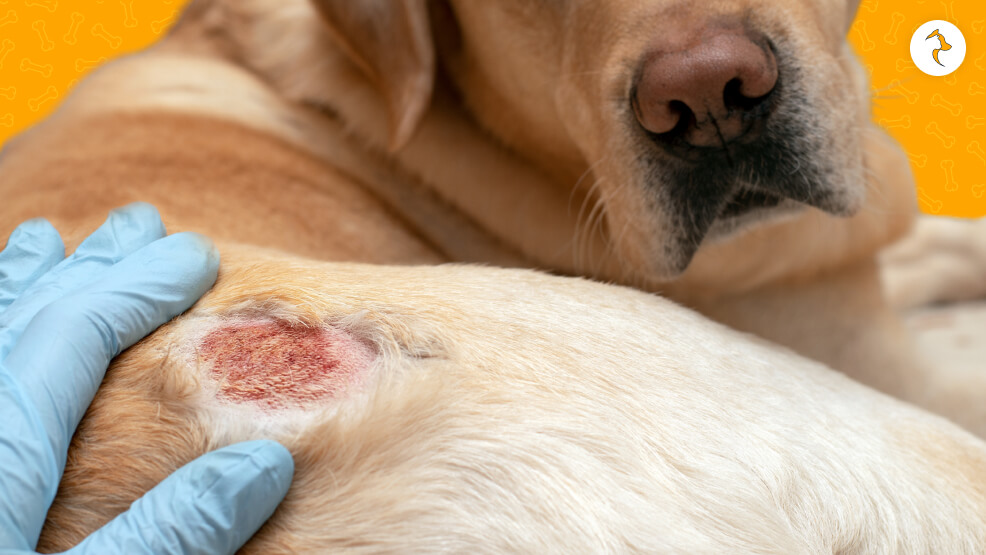
As there are so many possible causes and everything looks so alike, an accurate diagnosis normally is a step-by-step one.
It is a process using a series of items which eliminate one cause after another.
Diagnostic Processes
1. Physical Examination
- Examines for texture of skin, condition of coat, and distribution of lesions
2. Skin Scrapings
- Microscopically diagnoses mites-like parasite
3. Wood’s Lamp Test or Fungal Culture
- Diagnoses ringworm
4. Cytology (Impression or Skin Swab)
- Microscopic examination of cell, bacteria, and yeast cell
5. Allergy Test
- Blood test or intradermal test for allergy identification
6. Thyroid Testing and Blood Work
- Attempt to identify systemic disease or hormonal imbalance
7. Biopsy
- Severe, chronic skin disease (e.g., autoimmune disease)
My Dog losing his hair in Patches and Scabs: Treatment Based on Cause
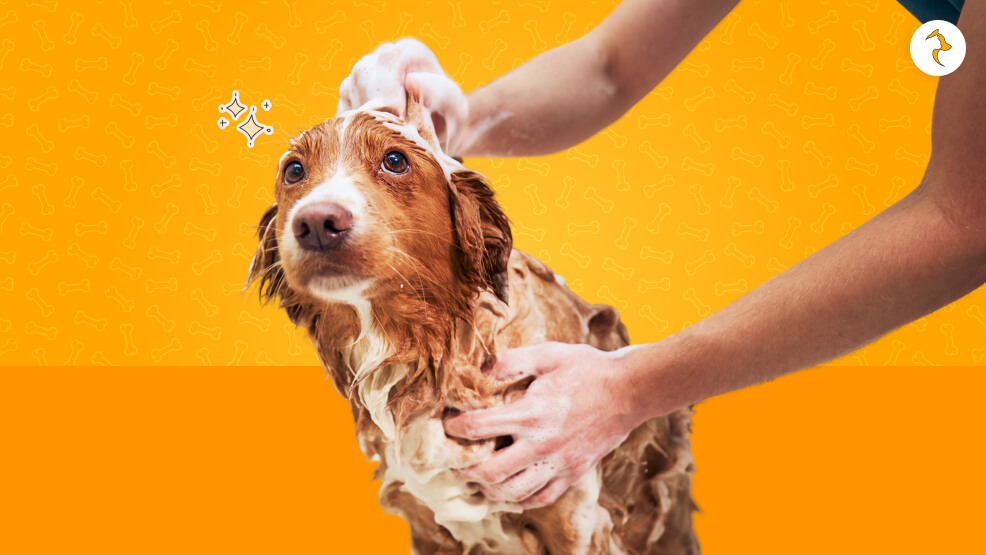
When the cause is identified, treatment can proceed.
For Fleas and Parasites
- Prescription preventatives (Simparica, Bravecto, NexGard)
- Topicals and medicated shampoos
- Environmental treatment and cleaning
For Infections
- Topical or oral antibiotics for bacterial infection
- Fungal medications for ringworm or yeast infection
- Medicated shampoos with Chlorhexidine, miconazole, or ketoconazole
For Allergies
- Apoquel or Cytopoint injections for relief from long-term itching
- Hypoallergenic diet trials or elimination diet trials
For Hormonal Disorders
- Thyroid hormone replacement therapy in hypothyroidism
- Trilostane or mitotane in Cushing’s disease
- Regular blood tests
For Autoimmune Diseases
- Immunosuppressive therapy (cyclosporine, prednisone)
- Specialist monitoring and regular blood tests
For Behavioral Issues
- Training or enrichment exercise
- Anti-anxiety drug (clomipramine, fluoxetine)
- Increased physical exercise and stimulation
Home Care & Prevention Tips to Allow Your Dog to Recover
Regardless of diagnosis, supportive home remedies on its own can permit recovery.
Do’s
- Use vet-approved hypoallergenic shampoos
- Bathe and dry your dog’s bedding
- Wear a cone collar to discourage scratching or licking
- Eat a high-quality diet with plenty of omega-3s and zinc
- Apply topical sprays or balms to itchy and healing
Don’ts
- Apply human cream or meds (all toxic to dogs)
- Do internet picture diagnosis on themselves
- Wait until it’s worse to come in to see the vet
When to See Your Vet Right Away
The majority of minor skin issues will cure on their own, but some signs must be addressed immediately by a vet:
- Abrupt, coarse shedding
- Oozing, bleeding, or open sores
- Over-scabbing
- Pain or discomfort
- Redness or pus
- Weight loss or loss of appetite
- Failure to call within 7–10 days at home
Early intervention will prevent complications and scarring of the skin.
Prevention of Patchy Hair Loss and Prevention of Scabbing
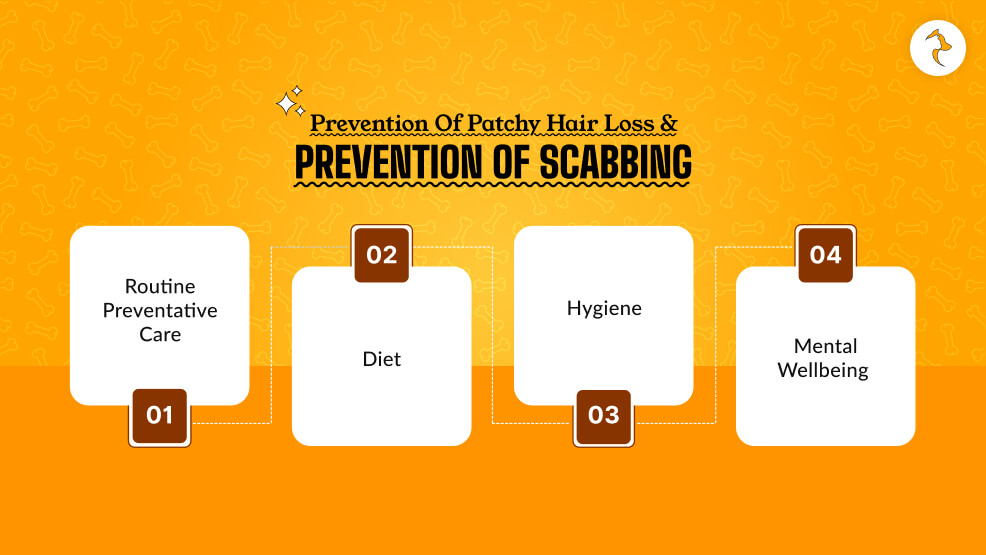
Prevention is always preferable to a cure. Here’s how much it’ll cost to protect your dog’s coat and skin:
Routine Preventative Care
- Monthly routine flea, tick, and mite preventatives
- Frequent routine vet visits and blood work
- Coat and skin inspection and grooming daily
Diet
- Prescription diet
- Medication like fish oil, biotin, and zinc
Hygiene
- Dog shampoo bath only (excessive bathing is not healthy)
- Daily cleaning of ears to avoid infection
- Trimming of fur around the paws and groin for cleanliness
Mental Wellbeing
- Ongoing exercise, stimulation, toys
- Help to reduce stress, noise, and change of environment shock
Know, Act, and Help
Scabbing and patchy shedding are more than skin issues—more likely, signs of disease or stress somewhere deeper.
Whatever the cause, be it something as mundane as fleas or something as malevolent as an autoimmune disease, treatment and early diagnosis are in order.
Be vigilant. Observe any alteration of coat, temperament, or skin of your dog. With good care under the guidance of the veterinarian, good diet, and proper housing, most dogs grow a normal coat.




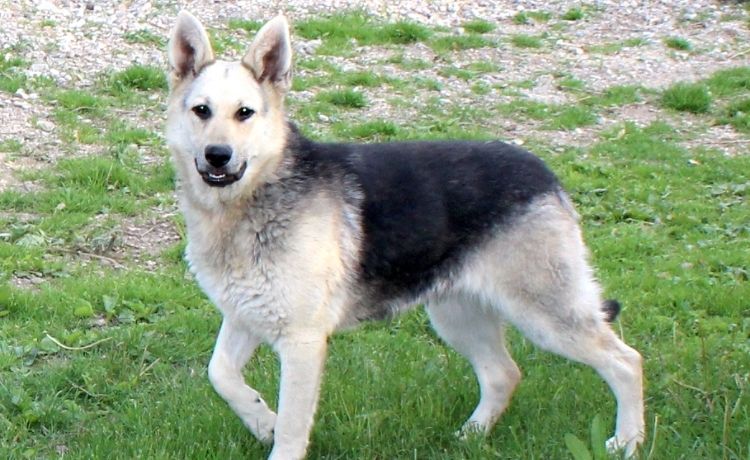

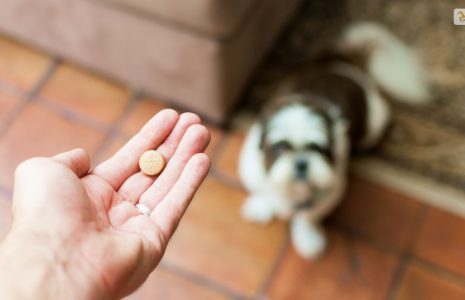


Leave A Comment